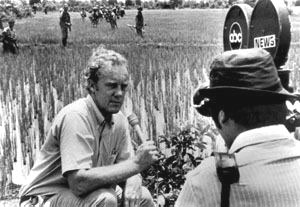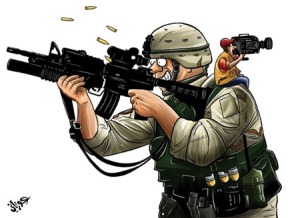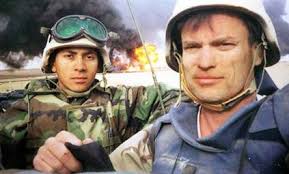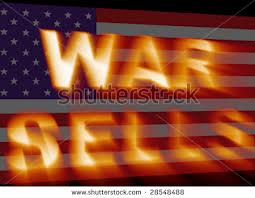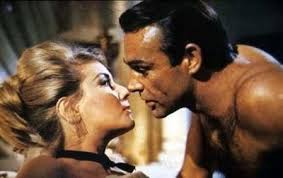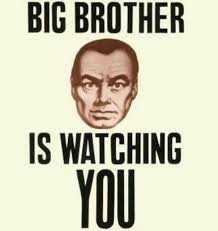Journalists : Embedded or in-bed(ed) with the soldiers
Journalists have a history of changing public opinion against a war.
All throughout the Vietman war, Americans and people watching television around the world saw first hand events of the cruelty and violence happenening during the war. Some say that this is exactly what turned public opinion against the war. The “television war”, or better seen in the media as the war that was lost due to journalists was the battle where many critics blame the media for loosing morale and public opinion for the war.
The U.S vowed to never let this happen again….
and then came the Gulf war..
“coverage was thin and journalists, who were miles from the action, found it almost impossible to check the facts they were being fed by the military”
-War Correspondent during Gulf War
During the Iraq war, the way in which the media covered it was very different to the Vietnam and Gulf war.
Embedded journalism showed it’s face
In 2007, the Department of Defense (DOD) emerged with a new strategy to regain public support for the Iraq war (Murphy, Ward & Donovan, 2006). The DOD began to recruit reporters from both national and international news organizations for the state sponsored “embedding” program (Murphy et al., 2006)
Embedded journalists ate and slept alongside the soldiers thus allowing them to bring live reports into the living room.
But is embedded journalism the correct form of journalism?
“it means viewers get a better understanding of what’s going on,” says Adrian Van Klaveren, the BBC’s head of newsgathering.
One could argue that embedded reporting is necessary in times of war. The BBC article of “How Embedded Reporters are Handeling the War” discusses the positive aspects of this type of journalism. Unlike in the reporting of the Gulf war, “there has been no censorship,” says Van BBC’s Van Klaveren.
The article states that embedded journalism offers protection to journalists in times of conflict. There have been many deaths of journalists during times of war due to insufficient protection… so what better way to protect ones life then with a trained body guard with you at all times.
To move anywhere outside central Baghdad, it was wise to embed
– David Ignatius, Embedded journalist during the Iraq war
The NBC article ” The Benefits of embedding reporters” tells us how important it was to embed journalists in the Iraq war. Embedded journalism changed the way in which we saw news. The embedded journalists had access to the reality of the war zones and could capture every moment, bringing immediecy to the public watching the news.
“Fascination turned to fear as we became riveted to our televisions when the embedded reporters broadcast the gunfire, the explosions, and the screams.”
The American population felt like they were inside the war..hearing the gunshots and explosions letting themselves be moved by emotion.
According to the NBC article, the news delivered to the public was not too censored and news broadcasters made sure of that. “Our editorial producers and anchors constantly patrolled our broadcasts and scripts for phrases such as “we attacked,” and “enemy soldiers,” which they revised to “the U.S. military attacked” and “Iraqi soldiers,” says David Verdi, the Executive director of NBC news.
David Bloom, an embedd journalist for the Iraq war had an idea that changed the representation of the Iraq war. For the first time ever, live footage was shown as Bloom rode with soldiers, reporting with a date-line in the war zone. This type of coverage allowed people viewing to connect with the soldiers who were risking their lives to fight for their country.
The embedded reporters, and the stories they told, drew us all closer than we had ever been before.
too close perhaps
-David Verdi
But some may say that if we are reporting on the same people who are protecting our lives, we owe them. Not in terms of money but in terms of positive coverage.
If your safety is in the hands of soldiers, the argument goes, you will be unwilling to criticise them.
After all, you can’t bite the hand that feeds you now can you.
The embedding program was set in place for journalists to work with soldiers and report back to the media in a way which reflected the war in a positive manner. According to an article in the Politics and Life Sciences Journal ,the DOD-sponsored embedding program of American and international press during the Iraq war was nothing more than a political strategy to “maintain [the public’s] approval, maximize positive coverage, and minimize the negative portrayals of the American military.
We live in an embedded world, in which journalists are often required to take sides, or to see things from only one side, as a condition of doing their job
In a report by NBC embed Kerry Sanders, viewers where shown uncesored footage of a bloody aftermath.”At no time did the commander in the field limit Sanders’ access or ability to broadcast, beyond the agreed-upon restrictions. But we can’t tell if this was always the case.
I do agree though that embedded journalism can taint the truth in reporting.It’s only natural.
Therefore, embedded journalism should not be a form of reporting.
The war in Iraq offered reporters unprecedented access to the battlefront, but according to an article in the Journalism and Mass communication quarterly, the images and stories being published by American Reporters were overly pro military in tone.
“There’s a larger narrative, beyond the facts, that is conditioning how a story is covered,” says David Ignatius of the Washington Post.
The article by David Ignatius in the Washington Post tells his first hand account of what embedded journalism really is. ” embedding comes at a price. We are observing these wars from just one perspective, not seeing them whole,” says Ignatius.Embedded journalism creates a bubble for journalists where it becomes difficult to see the other side of a war. Journalists cannot explain “the story”, if they only see one side.
During the war, reporters wanted to become embedded journalists.. Being so close with the soldiers meant that journalists could see what was happenening live. The proximity is what erased the lines of truth versus biased reporting.
After all ..
We live in an embedded world, in which journalists are often required to take sides, or to see things from only one side, as a condition of doing their job
The coverage from the embedded journalists that the media showed, was only a small picture of what was really happening. I think that if we want news to be truthful and un-biased, reporters need to stay away from embedding, even in this “blood sells” filled world. True journalism is when journalists don’t just sit next to the soldiers, but get off that truck and go speak to the people left behind, to the people hurt in the bombings and broken cities. Reporters must get their information from the people and not from a soldier or general.
The problem with embedded reporting is that the government uses reporters as a sense of “advertisement”, where the viewer doesn’t receive an unbiased opinion.
It is impossible to report with truth on events when drinking tea with one side of a war. This type of reporting might as well be a commercial for every reason why the enemy is in fact, the enemy.
We all need to break away from the caravan and the special access it allows — even that venerable caravan in the center of the highway — and try to get the story right.
-David Ignatius, reporter for the Washington Post
Pop Culture Wins the War
Kultur Kampf– a struggle between two or more sets of conflicting cultural values
During the Cold War, writers and artists were faced with a huge challenge. In the Soviet world, they were expected to turn out works that glorified militancy, struggle and relentless optimism. In the West, freedom of expression was vaunted as liberal democracy’s most cherished possession.
In this war the biggest weapons weren’t the massive missiles or nuclear attacks, but the soft power that was spread through art, music and liberal ideas.
Media has always had a strong impact in forming public opinion and the United states has acted upon this through planting starbucks or Mcdonalds around the world.
The U.S wants the rest of the world to know that the single chicken mcnugget, has been deep fried in a pool of freedom of expression and liberty for all oil.During the cold war, this idea remained the same. This time it was the C-I-A who took charge.
Should we thank the C-I-A for developing american culture?
Image of American Expressionism
The world has never seen the United states of America as the beacon of culture.This idea certainly did not change at the begining of the Cold War, the war against communism. In 1947 just after the C-I-A was created, the Propaganda assets inventory was founded which influenced magazines, newspapers and public information organizations to change this opinion of culture-less america.
The C-I-A promoted american abstract Expressionist painting around the world “for more then 20 years”, according to the article Modern Art was a CIA weapon. If president Trumann commented on the art of the time with ” If that’s art, then I am a Huttentot”, then how did the U.S convince the rest of the world on the magnificence of American Expressionism?
The International Organisation division or ( IOD ) played a very large role.The IOD sponsored american jazz, opera recitals as well as the Boston Symphony.
Agents for the IOD were used as preachers placed in Publishing houses or the film industry. Anywhere where culture could be sprouted. Sprouted and spread
The CIA’s strategy was to gather European intellectuals and artists from the non-Communist Left, including former Communists like Arthur Koestler, in order to create a cultural bulwark against Soviet Russia. This type of art was supported by the CIA because it displayed a type of creativity and freedom of expression that was not allowed in Soviet Russia.
The art that was found In Russia during the cold war era was one that was very confined and straight , a complete opposite of what American expressionism displayed.
The CIA knew it had to spread a message, but all done in secret.
“In order to encourage openness we had to be secret”
Liberal thoughts . A message promoted by the Congress for Cultural Freedom, where a group of intellectual elite posed as a front to covert interest in abstract expressionism.
This campaign , the Congress for Cultural Freedom(CCF) had offices in 35 countries and published more then two dozen magazines including touring european cities with “The new American Painting tour”.
Certain magazines such as Der Monat (1948-1971) and The encounter were CIA backed magazines. Behind the scenes at Encounter lurked the egregious British intelligence agent and broadcaster, Malcolm Muggeridge, whose face was so ubiquitous on the BBC in the Sixties. In reality, Muggeridge worked for the largely unexamined Information Research Department of the Foreign Office, set up by Attlee in 1948 as a sister organisation to the CIA to counteract the spread of Communism as said in an article in History Today.
The CCF was on fire.
Money was pumped into foundations by the C-I-A. Foundations which promoted and advertised this type of abstract artwork that displayed a non communist society in which everyone should live in. When paintings were backed with the world’s wealthiest saying “ooo” and “aaah”, the world had to love this type of art.
But..Mission : Accomplished ? not quite…
Bond. James bond. Fighting commies by day, sleeping with Russian beauties by night. Our friend Bond has more to do with winning the war then one may assume. According to the article by Dominic Sandbrook, “How Pop Culture helped with the cold war”, The role of Bond as well as other pop culture had a huge part in fighing off communism .
Around 1917, Russia dominated the world with artistic talent. From Eisenstein to Sergei Prokofiev, the Soviet- Union had it all. “All” a word that evaporated too quickly as Russia’s culture was forced into a box of cut off and censored ideas.
But those who werent told what to read, write , or create where found somewhere else.
The U.S and western europe was a fertile bed of uncensored ideas.. waiting to grow. The people under communist rule began to take notice.
Just what the CIA had intended
“Western Capitalism had become a beacon to the oppressed people of Eastern Europe”
Bond, the charming handsome man always had a fresh suit and multiple bombshells on his arm played a character who had it all. While the youth in soviet Russia were standing in lines to receive a stale piece of bread, bond was traveling the world freely, expressing himself freely and simultaneously living in luxuries that Soviet Russia couldn’t offer their population.
According to the article by Sandbrook, the life-style shown in the Bond movies, represented an “astounding advance towards comfort and prosperity-something the sclerotic, debt-fuelled Communist economies could never provide”
During the cold war, television as a medium for communication also had a large impact on it’s viewers. George Orwell played a large role in showing people how terrible life under a soviet dictatoriship was.With grey and depressing scenes , Animal Farm and 1984 were blasted on screens to confirm peoples thinking that communism was indeed the enemy.
The cold war was also being fought through the ears..with music.
For all the young soviets who were hungry for a better life, pop music soothed the soul and brought in glimpses of what life on the other side of the iron curtain was like. During the three day concert to mark the city’s (Berlin )750th anniversary, hundreds of east berliners climbed trees to get a sneak peek at their idols. It is no wonder that Soviet authorities hated pop music, it showed their youth a more promising life. Judas priest were said to be “anticommunist, racist” and pinkfloyed was accused of “distortion of Soviet foreign policy”
“British music represented not just freedom and fun, but modernity and self expression”.
It is because of the spread of these ideas that one can say that pop culture had a bigger influence then originally thought.
The article who caused the end of the cold war gives the reader a deeper insight into the events that eventually helped bring an end to the war.The author argues that it wasn’t just military power or Reagan’s rhetoric that played a role, but also through economic and soft power.
I do find that the cold war was ended due to the spread of liberal ideas from the west.
If you consume media and ideas from a society which allows for basic human rights and freedom , you are bound to want to reach that goal. People living under soviet regime noticed just how bad the standard of living was under soviet regime and as mentioned in the article ” Who Caused the End of the Cold War”, health care began to decline and the mortality rate increased.. something that no member of society wants to live in.
I also believe that the economy of the soviet union during the cold war had a large impact on the end of the soviet union. During the early period of the war, communism and the Soviet Union had a great deal of “soft power” but began to crumble with the decline of communist ideology and the failure of the soviet economy.
Band members which people idolized everywhere had a great impact on youth living under soviet regime. The ideas spread in their songs, depicted a type of life that was so foreighn to fans listening to the songs and certainly created a large motivational factor . The book “Who Paid the Piper” by Francis stauners shows just how each writer, director, or artist was used as an instrument to spread liberal ideas and how soft power reached across borders.
“we wanted to demonstrate that the West and the United States was devoted to freedom of expression and to intellectual achievement… without any rigid barriers as to what you must say, what you must do, or what you must write”
Tom Braden, first chief of the IOD.
This demonstration to the Soviet Union and rest of the world, ultimately blocked communism and stopped it.
For the people livng in Russia during the cold war period, one thing was clear: Their standard of living was significantly lower then that in the west. People began to loose faith in the system.
The cold war was based on psychological fear, whoch is why the spread of soft power and ideas , also psychologically based had such a strong impact. Paintings were meant to emphasize how much of a liberal idealogy the us had. Television , a form of communication that was beginning to catch on in every household used the television a s amedium to portray just how horrible and drepressing, dark and grey life in a totaltairan society was.
Soft power has to do with a nation’s ability to influence through attraction which is why the U.S turned to the media to portray images that represented an attractive United states free of communist thought.
The cold war wasn’t ended because of threatening missiles or strong leaders. The cold war ended because of Pop culture and turning on the lights for a better world, in a room full of dark communist ideas . Using ‘soft power’ a country need not make concessions: it simply gets its way – softly.
